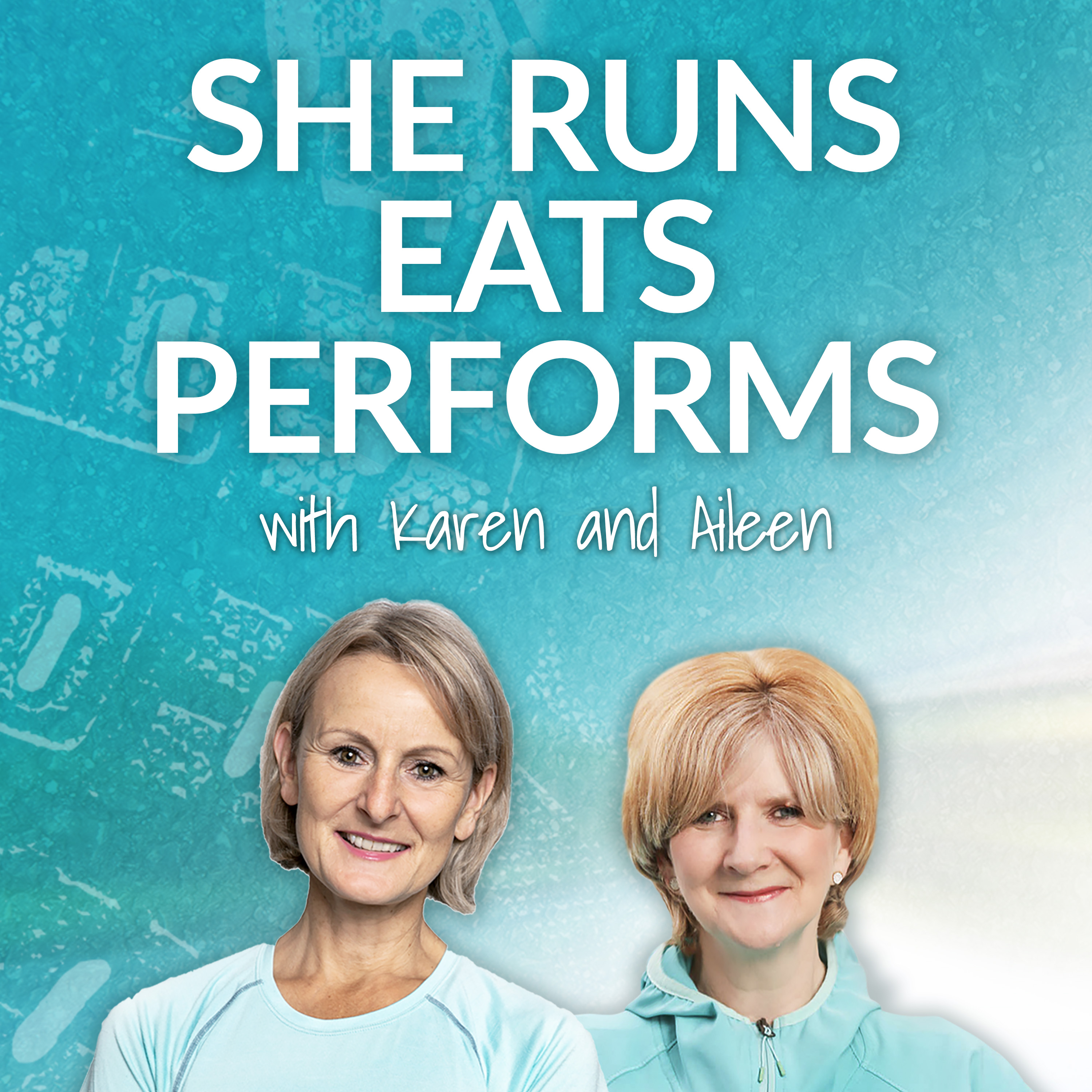Athletes Plates in Practice
How do you know which athlete plate to choose for your run training? When we refer to athlete’s plates, we are talking about using a nutritional tool which helps you decide what and how much food should be on your plate, related to your training and everyday activities.
We use athlete plate graphics with our clients to help them plan their food on a day-to-day basis and we often refer to everyday plate balance and athlete plate balance during our conversations on the podcast.
Today we’d like to share a little more about the background to the development of the athlete plate concept and explain how you can use them to support your run fueling so you have a sound nutrition foundation for every level of running.
This will help your performance, your recovery and support injury prevention. Often people aren’t sure which athlete plate to choose so we aim to help you with that today.
The key areas we are going to talk are:
1. Why were athlete plates created and how using them as a nutritional tool may be supportive to your nutrition and running goals and performance?
2. Our interpretation of athlete plates and how we use them with our clients.
3. An example of how a runner training for a marathon uses athlete plates for fueling training.
Download our FREE E book TOP Running Snacks and Nutrient Timing to Fuel Peak Performance
SHOW NOTES
(05:11)
Who created Athlete Plates and why?
Athlete Plates were designed as a visual tool by the UCCS - University of Colorado/Colorado Springs (UCCS') Sport Nutrition Graduate Program led by a research scientist Nanna Meyer in collaboration with the US Olympic Committee's (USOC) Food and Nutrition Services.
Their aim was to help sports dieticians and athletes to adjust their nutrition to variable training loads when following a periodised training and competition plan. They developed and designed athletes plate graphics for EASY/MODERATE and HARD TRAINING.
https://swell.uccs.edu/theathletesplate
More recently they have developed a Vegan/Vegetarian Athletes Plate
https://swell.uccs.edu/vegetarianvegan-athletes-plate
https://swell.uccs.edu/sites/g/files/kjihxj2576/files/2020-10/Airi_Research_Poster-compressed_0.pdf
(08:15)
What are the main components of the athlete plates?
There are 3 main aspects of the traditional athletes plate – Lean PROTEIN, WHOLEGRAINS/GRAINS and VEGETABLES alongside basic information regarding healthy fats, fluids, flavours (herbs/spices/condiments). The concept is to help athletes to choose the correct balance of these food groups to support the level of training they are undertaking.
So the base for EASY Training is to eat ¼ plate PROTEIN, ¼ plate whole grains, ½ plate vegetables.
For MODERATE training – protein remains the same but whole grains increase to approx. 1/3rd plate with the remainder being vegetables.
For HEAVY TRAINING – protein remains the same – ½ plate of grains and ¼ plate vegetables. Note the change from whole grains to grains – this is due to suggesting use of more quick release carbohydrates.
(10:11)
How does the athlete plate for plant based athletes look?
The protein element is approximately 1/3rd plate for each of the athlete plates and this is because you’re likely to need a bigger portion of plant protein to hit your protein target. They also suggest that athletes should add protein rich snacks during the day which also will help them reach their overall protein target for the day.
For the EASY plate the proportions are 30% or approx. 1/3rd protein, 20% or 1/5th Cereals or Starchy foods and 50% or ½ plate of fruit and vegetables.
For the Moderate Plate – looking at the graphic it’s roughly 1/3rd for each of the food groups.
And for the Heavy Training Plate it’s 1/3rd protein, ½ cereals/starchy foods and 1/5th vegetables.
(13:58)
Suggestions for plant-based protein sources.
(16:13)
A quick look at the outcome of the study Validation of the Athlete's Plate Nutrition Educational Tool: Phase I International Journal of Sports Nutrition and Exercise Metabolism.
(18:18)
Protein consumption and sustainability
There is a wider concern about the impact on the environment of farming animal protein … which has led to another study where the athletes plate has been evaluated for its environmental impact. We won’t go into that today but for anyone who is interested here is a link to the study https://www.mdpi.com/2072-6643/12/8/2484/htm
(19:21)
We discuss what the researchers define as EASY/MODERATE and HEAVY/HARD Training and how we interpret that for runners.
(23:30)
Our style of athletes plates – are they any different and how do we use them with our clients (including personalisation).
(31:56)
An introduction to our 1:1 Personalised Nutrition Services.
(35:01)
We discuss an example client who is training for a marathon and share our advice on how different athlete plates may be used for fueling her training.
(41:39)
Key Take Aways
1. The athletes plate concept is a tool to help nutritionists and athletes to adapt food intake to variable training loads for EASY/MODERATE and HARD TRAINING.
2. The components of the plate include PROTEIN, CARBOHYDRATE and Vegetables.
3. The protein part of the plate is unchanged with the level of training, however the Carbohydrate element increases with the level of training.
4. The EASY Training Plate should be used for everyday nutrition, easy runs and for rest days.
5. The MODERATE training plate should be used for runs up to 14-15 miles.
6. The HEAVY training plate should be used for runs above 15 miles and the runner should use this from the night before their training run or race and on the day of the long run.
7. Pre/during and post run fueling should apply alongside the athlete plate for mealtimes.
Related Topics:
Nutrition Basics For ALL Runners
Nutrition Periodisation for Runners
Blood Sugar Balance for Female Runners
Disclaimer:
The suggestions we make during this episode are for guidance and advice only, and are not a substitute for medical advice or treatment. If you have any concerns regarding your health, please contact your healthcare professional for advice as soon as possible.
If this is your first time your show and you’d like to know more about us please check out our TRAILER.
Also, when you're ready, here are FIVE ways that we can help you:
1)Check out our free downloadable resources
2) Join Easy Nutrition For Healthy Runners HUB. Please join our FREE private facebook group for education, tips, inspiration with like- minded female runners.
3) Get our Easy Nutrition For Healthy Runners Online Programme. As a THANK YOU, please use COUPON CODE POD to get 33% discount off the full price which brings the price to £199.
4)Find out if you are the right fit for our Healthy Woman Healthy Runner Programme. Please book a free Discovery Call.
5) If you love our FREE stuff but need more help and would like to find out which of our services would be best for you. We’d love to have a short informal (no obligation) chat to see how we can help you. Book a free call here.
We love to hear from our listeners - what are your nutrition and running goals, challenges and successes, please drop us a line at hello@runnershealthhub.com
Best Wishes and Happy Running!
Karen and Aileen

